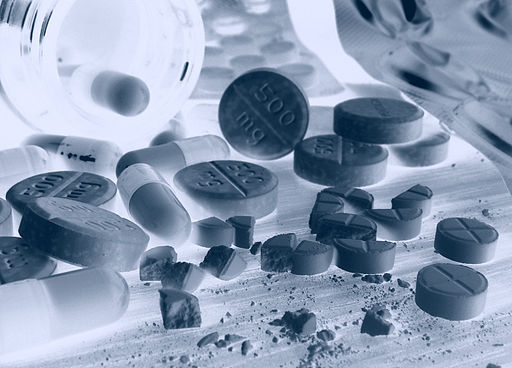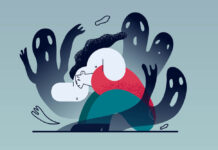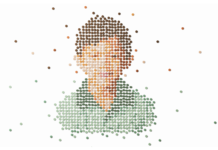Two new articles find that rates of ADHD diagnosis and stimulant prescription continue to rise all over the world. One study found that the ADHD diagnosis has increased in prevalence in the US for the past 20 years; the other study found that stimulant medication use has increased across the world, in all of the countries studied—but with wide variation between regions.
The first study was led by Wei Bao, MD, PhD, at the University of Iowa and was published on August 31 in JAMA Network Open. This study examined the prevalence of the ADHD diagnosis in the US, finding that it has risen significantly for both children and adults, in all subgroups of race and gender, between 1997-2016. They found that the rate rose from 6.1% in 1997 all the way to 10.2% of children in 2016. More than twice as many boys had the diagnosis: 14% of boys had the diagnosis in 2016, compared to 6.3% of girls.
“This study suggests that additional research is needed to better understand the cause of this apparent rise in prevalence,” the researchers write.

About 35,000 households across the US were included in this survey. The prevalence of ADHD diagnosis was approximately the same for White, Black, and Hispanic children.
The second study included a large team at Duke University and the University of Hong Kong and was published on September 13 in Lancet Psychiatry. The researchers examined the prevalence of stimulant medication use across the world and found that this increased “in all countries and regions” although there were regional variations in the magnitude of increase, and in the types of medications used.
“Increasing ADHD medication use in both children and adults supports a need for monitoring medication safety and effectiveness in exposed populations, particularly in adults, because of the scarcity of knowledge about ADHD medication use in this age group,” Raman and Man write.
In this study, the researchers found that although prescription of stimulants increased in every country they studied, the magnitude of increase varied wildly. For instance, prescription of stimulants to children reached almost 5% in North America combined (6.69% for US children on Medicaid), while it was less than 1% in Asia, Australia, and Western and Southern Europe.
In most countries, methylphenidate (such as Ritalin) accounted for almost all prescriptions, while in the US, amphetamines (such as Adderall) were more common.
The study included data from 13 different countries and one Special Administrative Region. It included 154.5 million individuals.
Raman and Man noted that guideline variation might account for some of this variance between regions: some guidelines recommend behavioral treatment as first-line interventions (such as the NICE guidelines in the UK), while other guidelines recommend stimulant use as a first-line intervention (several US guidelines). The researchers also listed the availability of treatments, treatment cost, and conservative attitudes about medication in Asia as explanations of the variance in prescribing stimulants to children.
The researchers write that in the US, “The continued increase in prescribing rate should be considered as a cautionary note for clinicians and regulators, who should ensure that they are not over diagnosing and medicating children and young people.”
A commentary on that study by Margaret H. Sibley, PhD, at Florida International University, also published in Lancet Psychiatry, highlighted the “urgent need to refine evidence-based guidelines for stimulant prescribing.” Sibley notes that the study does not clarify whether the participants received stimulants for diagnosed ADHD, non-ADHD symptoms, or even controversial off-label uses including supposed “cognitive enhancement” and “weight loss.” These factors could account for some of the differences in international prescription practices.
“Empirical data suggest that there probably is mixed prescription of stimulants to individuals who truly have ADHD, people who feign ADHD symptoms, misdiagnosed individuals, and those who openly receive medications for an off-label use endorsed by their prescriber,” Sibley writes.
However, despite this “ballooning use of stimulants,” Sibley goes on to suggest that those with “legitimate” ADHD fail to receive “treatment” due to stigma and “problems with stimulant acceptability”—presumably referring to adverse effects of stimulants.
All of this research points to confusion about the increasing prevalence of ADHD diagnosis and stimulant prescription. Researchers suggest that ADHD is both overdiagnosed and underdiagnosed, that stimulants are both stigmatized and sought by millions of people without the diagnosis, and that guidelines around treatment are unclear and unstandardized.
****
Raman, S. R., Man, K. K. C., Bahmanyar, S., Berard, A., Bilder, S., Boukhris, T. . . . Wong, I. C. K. (2018). Trends in attention-deficit hyperactivity disorder medication use: a retrospective observational study using population-based databases. Lancet Psychiatry. Published online September 13, 2018. http://dx.doi.org/10.1016/ S2215-0366(18)30293-1 (Link)
Sibley, M. H. (2018). Why are stimulant medication prescriptions rising globally? Lancet Psychiatry. Published online September 13, 2018. http://dx.doi.org/10.1016/ S2215-0366(18)30317-1 (Link)
Xu, G., Strathearn, L., Liu, B., Yang, B., & Bao, W. (2018). Twenty-year trends in diagnosed attention-deficit/hyperactivity disorder among US children and adolescents, 1997-2016. JAMA Network Open, 1(4), e181471. doi:10.1001/jamanetworkopen.2018.1471 (Link)















“However, despite this ‘ballooning use of stimulants,’ Sibley goes on to suggest that those with ‘legitimate’ ADHD fail to receive ‘treatment’ due to stigma and ‘problems with stimulant acceptability’—presumably referring to adverse effects of stimulants.”
Let’s clarify a few points. First of all, there is no such thing as “ADHD.” Second, it is impossible to “diagnose” something that is not real in the first place. Third, as long as the myth of mental illness continues its reign of terror, and as long as psychiatry, pharmaceutical companies, and others continue to disseminate “mental health” propaganda, the destruction of innocent lives will continue.
Naturally, rates of so-called “diagnoses” will continue to rise, because psychiatry manufactures “mental illness” and pharmaceutical companies tap into the market. There is no such thing as a “legitimate” diagnoses of “ADHD.” The rate of leprechaun sightings may also be increasing, but at least this would bring good luck as opposed to psychiatry’s deceptions. It is the definition of evil to harm the innocent, particularly innocent little children, for a profit.
Report comment
“It is the definition of evil to harm the innocent, particularly innocent little children, for a profit.” I couldn’t agree more, Slaying. Force feeding children drugs that are chemically identical to cocaine is morally repugnant.
Report comment
14% of American boys apparently have this “neuropsychiatric disorder “? Really? And this diagnosis seems to depend on subjective assessements of things like forgetfulness, carelessness, impatience and irritability. Seems a bit odd to me.
Report comment
More than a bit! And the percentage keeps going up and up. Now they have toddlers on Ritalin. Seriously, what’s a “short attention span” for a toddler????
Report comment
im thinking its partially rooted in growing inequality, austerity measures, and (of course…) the overall “medicalization of deviance (and everyday life…)” and slaying the dragon is correct, too, of course; there’s a very real “epidemic of psychiatry,” one that seems to grow every passing year.
what to do? I’m thinking those of us who have survived should find a way to exit, as best we can, and warn those on their way in, or in but not deeply inside “the system.” save pre-patients and those who haven’t been so damaged and slathered in stigma that escape will require a miracle. other than that…
pray. seriously. I’m a Christian, so I recommend Jesus, but…pray. Please.
Report comment
When are parents going to stop believing psychiatry and the drug companies and begin protecting their children? We’re allowing generation after generation of kids to be drugged adversely during a time that their brains are still developing. The only chemical imbalance is the one caused by the stimulants forced onto the poor kids, whose parents won’t even step up to speak for them and protect them.
Parents need to tell psychiatrists that they are full of bull feces and be done with it. Instead, they allow their kids to be led to the slaughter just like lambs. It’s disgusting.
Report comment
And this is exactly what people were saying in the 1990’s. Except it was actually much more controversial and more damning for psychiatry, yet here we are.
1990: “The numbers of children being prescribed dangerous amphetamines for a controversial diagnosis continues to soar, blah blah blah blah blah.”
2018: “Lancet Psychiatry, highlighted the ‘urgent need to refine evidence-based guidelines for stimulant prescribing’. However, despite this ballooning use of stimulants, Sibley goes on to suggest that those with ‘legitimate’ ADHD ‘fail to receive treatment’ due to ‘stigma’ and problems with ‘stimulant acceptability'”
Report comment
I think that as long as anyone admits to the possibility of “legitimate ADHD”, the problem will continue to expand. When you come up with “diagnoses” that are convenient for those in power and have no rational or objective bounds that can be established, “diagnostic creep” is inevitable. And there are a lot of “diagnostic creeps” out there happy to be making big bucks supplying the fixes!
Report comment
Exactly. Law enforcement and the medical field state that stimulant use, amphetamines, is dangerous and therefore this is why people must be put in jail when they sell the stuff on the streets and when people buy it on the streets.
But then they turn right around and state that it’s perfectly fine to give stimulants, amphetamines, to kids because they supposedly have some problem when they can’t sit still. And yet you don’t hear any outcry about this like you do about street use of stimulants. It’s destroying our kids and everyone goes right along with it. As I stated before, when are parents going to stand up for their own children and deny the drugging of their kids?
Report comment
The other part people don’t think about is that those who are NOT drugged and have that somewhat wild, hate-to-be bored kind of personality LEARN HOW TO COPE with people who don’t like their style or with situations where a less spontaneous approach is helpful. They learn SKILLS. But those who are on the stimulants don’t have to face those challenges, and can blame any failures on “my meds aren’t working” or “I have ADHD, I can’t help myself.” The psychological damage that can be done is quite substantial, beyond the obvious physiological damage of flooding the brain with dopamine every morning for a decade or more.
Report comment
I believe you’ve pointed out one of the major issues that results with drugging kids to the gills for everything. It keeps them from developing vital skills that they need to learn in order to live in society in a productive manner for themselves. As a parent you already know that kids are tricky personalities to deal with. They often tend to want to use excuses for themselves so you have to challenge them to rise to their very best rather than learning helplessness. It’s a challenge for the parent and for the kid. I believe that drugged and labeled kids don’t get the challenging that they need. It makes me wonder what’s going to happen to our society and country when so many people of the next generation have had this done to them. You are right, there’s lots of psychological damage being done, which may be the more difficult of the two kinds of damage to deal with.
Report comment
I can say that I have read a few old articles about effects of dextroamphetamine with people based on temperament and the closest to someone hyperactive, tends to react in the “paradoxical”.
And I feel like this rationale makes me okay as I was forced it early on. I just was that 1-2 hours of yelling in my end daily growing up. I mature and it has gone down from a max of 115 mg/day at 13 to 40-60 mg. And I never asked for it.
I see a lot of the “don’t feel bad if you are still on X, Y, Z meds but this one gets that side eye. Chain smoking, 2 pot/day of coffee, maxed on methadone narcissists who are hardly sober to me make me feel like a crackhead. I know that caffeine amount that example drinks would make me panic.
Report comment
Kids may indeed have a physical problem where they spend all their time in frantic pointless activity. It’s called lead poisoning. Few GP’s or shrinks will look for it, even though doing thorough backgrounds and/or a hair sample aren’t complicated activities which don’t take an Einstein to execute. Synthetic food colors can also sometimes induce hyperactivity, but it’s apparently unpatriotic to badmouth the all American kiddie diet, while allergy fasting is definitely subversive to our way of life.
Report comment
But, but, but… if it’s a DIET problem, that would mean the PARENTS or the SCHOOLS would have to do something different! Isn’t that “blaming the parents?” Why should the ADULTS have to change when we can just use a handy “diagnosis” to blame the child?
Report comment
Well, even though the kids are a mess and their parents are miserable, the doctor gets to schmooze with agents of the largest pharmaceutical companies in winter seminars in the subtropical regions of this continent, enjoying the sun while company reps misinform him about benevolent new miracle drugs (with plenty of time for recreation) that the company is pushing.
Report comment